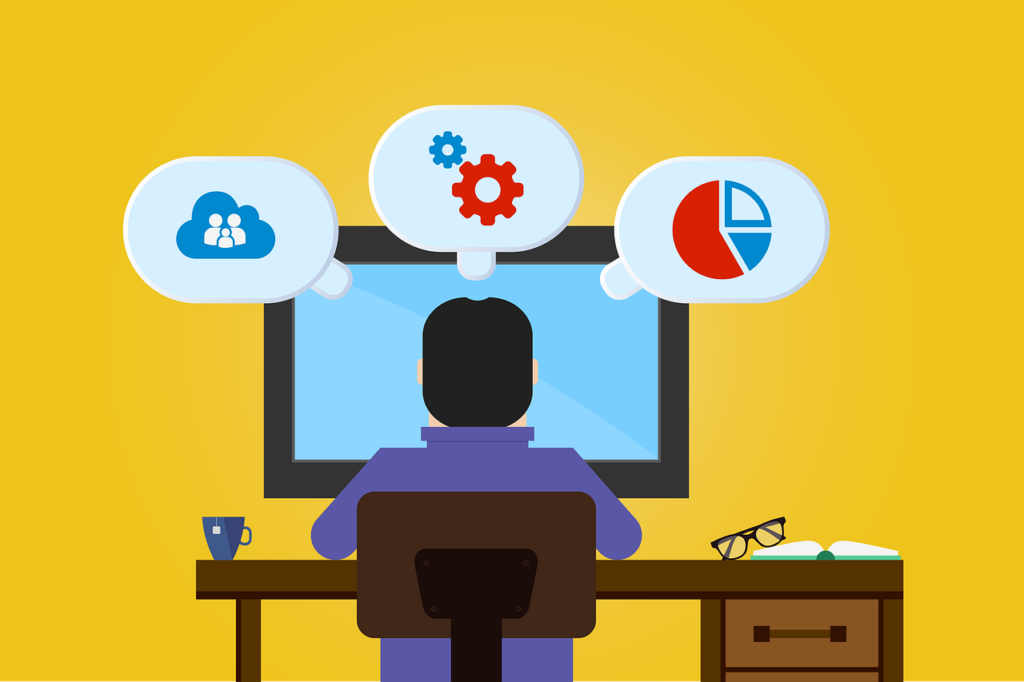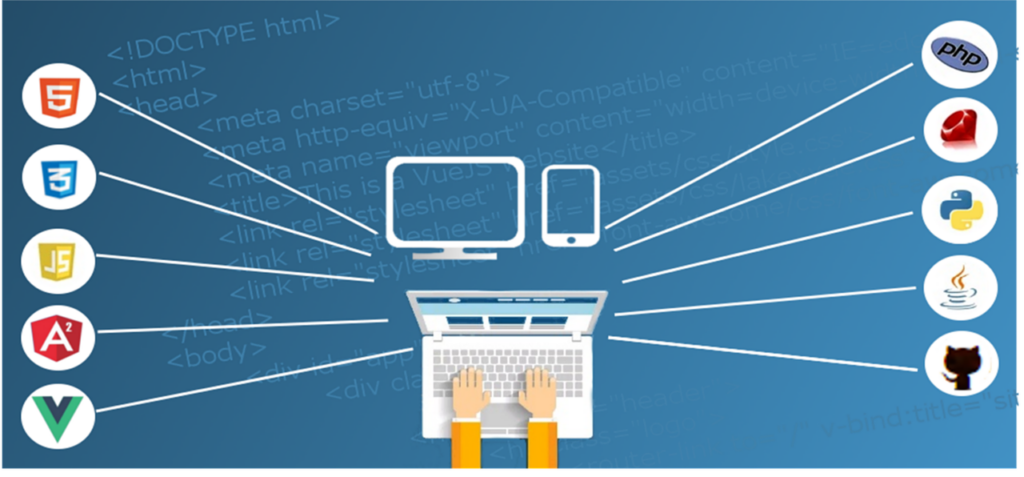Are your outdated web apps holding your business back? It’s time to breathe new life into your digital presence with the latest technology. Imagine just how much the web has changed in the last 5 years. Have your web apps kept up with current trends: If not, there’s no need to worry. You can update them and keep looking professional and up-to-date. And since SmartDev has helped many clients accomplish this, you’re already looking in the right place.
In this article, we’ll explore the importance of updating old web apps and how it can benefit your business.
The Importance of Updating Old Web Apps
Technology is constantly evolving, and your web apps need to keep up. Outdated apps can be slow, insecure, and lack the functionality that modern users expect. Users today have high expectations when it comes to the performance and usability of web apps. If your app doesn’t meet these expectations, they will quickly move on to your competitors.
Updating your web apps with new technology can bring a range of benefits for your business. Firstly, it can significantly improve the performance of your app. New technologies are built to be faster and more efficient, allowing your app to handle larger amounts of data and process requests more quickly. This can lead to a better user experience and increased customer satisfaction.
Secondly, updating your web apps can enhance security. Outdated apps are more vulnerable to security breaches and hacking attempts. By adopting the latest security measures and technologies, you can protect your app and the data of your users. This is particularly important if your app handles sensitive information or transactions.
Lastly, updating your web apps allows you to add new features and functionalities. As your business grows, the needs of your users may change. By leveraging new technologies, you can introduce innovative features that meet the evolving needs of your target audience. This can help you stay ahead of the competition and attract new customers.
Assessing the Current State of Your Web App


Before embarking on the journey of updating your web app, it’s crucial to assess its current state. This will help you understand the areas that need improvement and guide your decision-making process. Start by analysing the performance of your app – how fast does it load? Are there any bottlenecks or performance issues? Identify areas that need optimization.
Next, evaluate the user experience of your web app. Put yourself in the shoes of your users and navigate through your app. Take note of any usability issues, confusing workflows, or missing features. Consider conducting user surveys or gathering feedback from your customers to gain valuable insights into their pain points and expectations.
Additionally, assess the security of your web app. Are you using outdated security protocols? Are there any known vulnerabilities in the technologies you’re currently using? This evaluation will help you identify potential risks and prioritise security upgrades during the update process.
Identifying Outdated Technologies and Features
Once you have assessed the current state of your web app, it’s time to identify the outdated technologies and features that need to be replaced. Look for technologies that are no longer supported or have reached their end-of-life. These technologies may pose security risks or lack compatibility with modern devices and browsers.
Consider the features of your web app and compare them to the latest trends and industry standards. Are there any missing features that your competitors offer? Are there any features that have become obsolete or irrelevant? Identifying outdated features will help you prioritise the development of new functionalities during the update process.
Researching and Selecting New Technologies


Now that you have a clear understanding of the areas that need improvement, it’s time to research and select the new technologies that will power your updated web app. Start by exploring the latest frameworks, programming languages, and libraries that are widely adopted in the industry. Consider factors such as community support, scalability, and ease of integration.
Additionally, research the latest trends and emerging technologies that can add value to your web app. For example, machine learning, artificial intelligence, and voice recognition are gaining popularity and can enhance the user experience of your app. Evaluate how these technologies can be integrated into your app to provide unique and innovative features.
When selecting new technologies, consider the long-term sustainability of your choice. Will the technology continue to evolve and receive updates in the future? Is there a strong community that can provide support and resources? Making informed decisions during this stage will ensure that your web app remains relevant and adaptable in the years to come.
Planning the Update Process
Now that you have identified the technologies to be adopted, it’s time to plan the update process. Start by creating a detailed roadmap that outlines the different stages of the update, including development, testing, and deployment. Break down each stage into smaller tasks and set realistic deadlines for completion.
Consider the impact of the update on your users and plan for any potential disruptions. Communicate transparently with your users throughout the process to manage their expectations and gather feedback. This will help you address any concerns or issues that arise during the update.
Additionally, allocate resources and assign responsibilities to ensure a smooth and efficient update process. Collaborate closely with your development team or partner with a trusted technology provider to ensure that the update is executed successfully.
Migrating Data and Content to the New Web App
During the update process, it’s crucial to migrate your existing data and content to the new web app. This includes user accounts, databases, media files, and any other relevant information. Develop a data migration plan that ensures the integrity and accuracy of your data throughout the transition.
Before migrating the data, thoroughly clean and organise it to eliminate duplicates, inconsistencies, or outdated information. This will help maintain data quality and enhance the overall user experience. Consider backing up your data before the migration to minimise the risk of data loss or corruption.
Ensure that all necessary data transformations and validations are performed during the migration process. Test the migrated data thoroughly to ensure that it is accurate and accessible in the new web app. This will help provide a seamless experience for your users and avoid any disruptions to their workflow.
Testing and Debugging the Updated Web App


Once the update is complete and the data has been migrated, it’s essential to thoroughly test and debug the updated web app. Testing is a critical phase that ensures the functionality, performance, and usability of your app. Perform both automated and manual tests to identify any bugs, errors, or inconsistencies.
Start by conducting functional testing to ensure that all features and functionalities of the web app are working as intended. Test each workflow, form, and interaction to detect any issues or unexpected behaviour. Additionally, perform compatibility testing to ensure that your app works seamlessly across different devices, browsers, and operating systems.
Consider conducting performance testing to evaluate the speed, scalability, and responsiveness of your web app. Test the app under different loads and traffic conditions to identify any bottlenecks or performance issues. This will help you optimise the app for maximum efficiency and provide a smooth user experience.
User Feedback and Iteration
Throughout the update process, it’s crucial to gather feedback from your users and iterate based on their input. Encourage your users to provide feedback on the updated web app and listen to their suggestions and concerns. This will help you identify areas that need improvement and enhance the overall user experience.
Consider implementing user feedback mechanisms such as surveys, feedback forms, or user testing sessions. Analyse the feedback received and prioritise the changes based on their impact and feasibility. Regularly communicate with your users, informing them about the updates and improvements you are making based on their feedback.
Iterate continuously based on user feedback to ensure that your web app evolves with the needs and expectations of your users. This iterative approach will help you deliver a web app that provides maximum value and meets the evolving demands of your target audience.
Launching the Updated Web App


After thorough testing, debugging, and iteration, it’s time to launch the updated web app. Before the launch, ensure that you have a solid deployment plan in place. Consider factors such as server configuration, domain setup, SSL certificates, and any other technical requirements.
Communicate the launch date to your users and provide clear instructions on how to access the updated web app. Consider conducting a soft launch or a beta testing phase to gather feedback from a smaller group of users before the full launch. This will help you identify any last-minute issues or improvements that need to be addressed.
During the launch, monitor the performance and stability of your web app closely. Have a support team in place to address any user concerns or issues that arise. Regularly communicate with your users, informing them about the launch and any updates or new features that are introduced.
Ongoing Maintenance and Future Updates
Launching the updated web app is just the beginning. To ensure its continued success, ongoing maintenance and future updates are essential. Regularly monitor the performance and security of your app, and address any bugs or issues that arise promptly.
Stay up to date with the latest technologies and industry trends to ensure that your web app remains competitive and relevant. Consider introducing new features and functionalities based on user feedback and market demands. Regularly evaluate the performance and usability of your app and make necessary improvements to provide the best possible user experience.
Conclusion
Don’t let your old web apps hinder your business’s growth. Embrace the power of new technology and unlock the full potential of your digital presence. By updating your web apps with the latest technologies, you can improve performance, enhance security, and provide a better user experience. Assess your current needs, identify outdated technologies, research and select new technologies, plan the update process, migrate data and content, test and debug the updated app, gather user feedback, launch the updated app, and provide ongoing maintenance and future updates. Stay tuned to discover how updating your web apps can revolutionise your online business.
Reach out to SmartDev to discuss any project you like, especially one that includes updating old web apps. But really, we can handle it all. A simple conversation can get you going in the right direction and help you make sure you’re not out of fashion.



